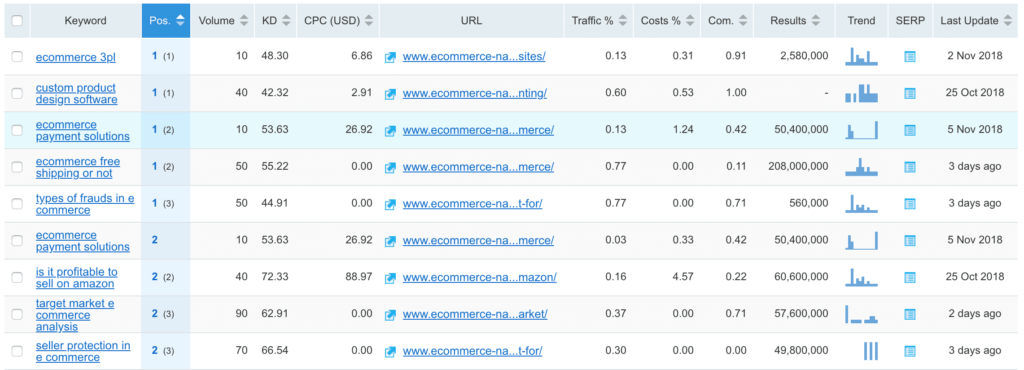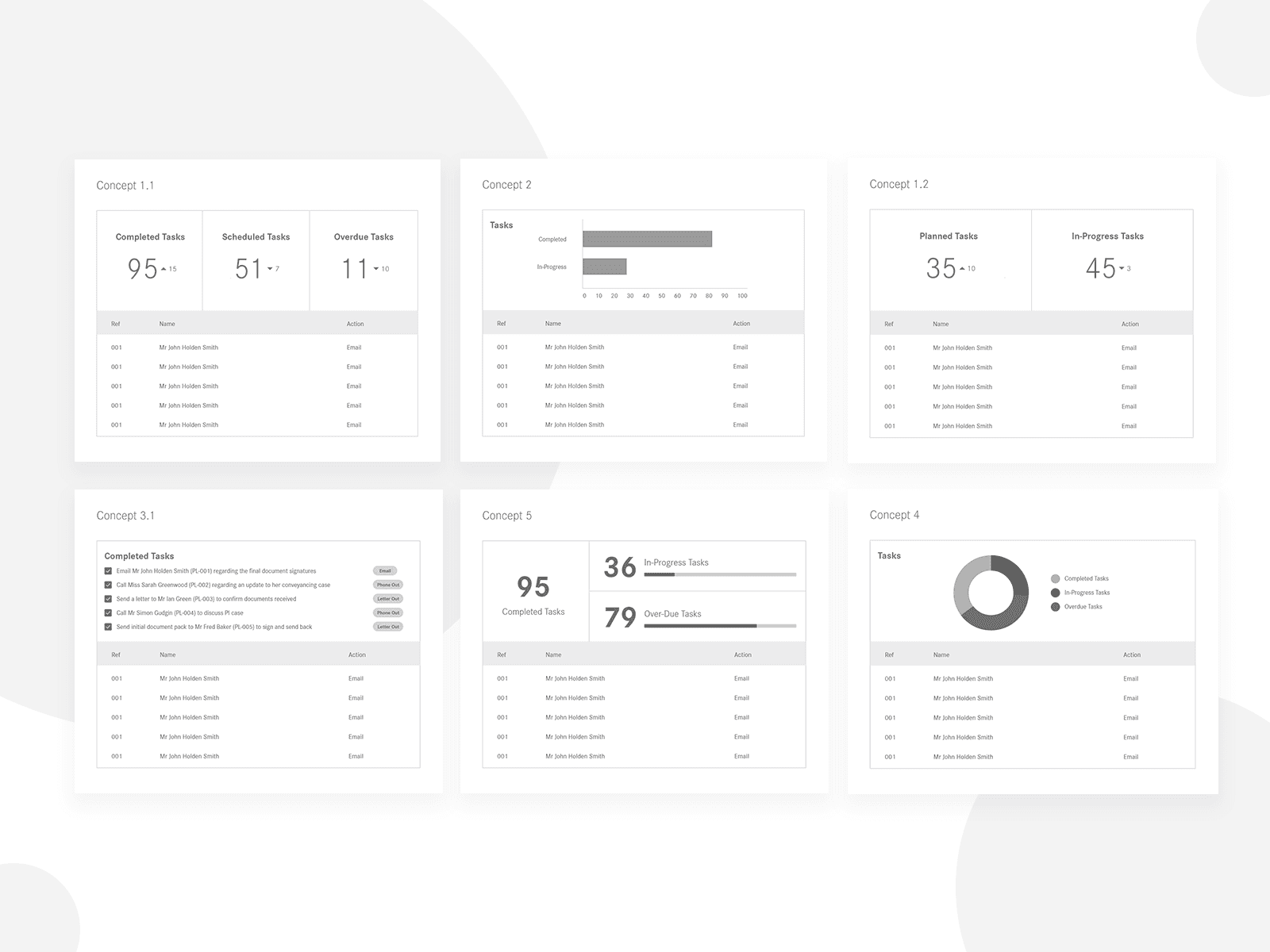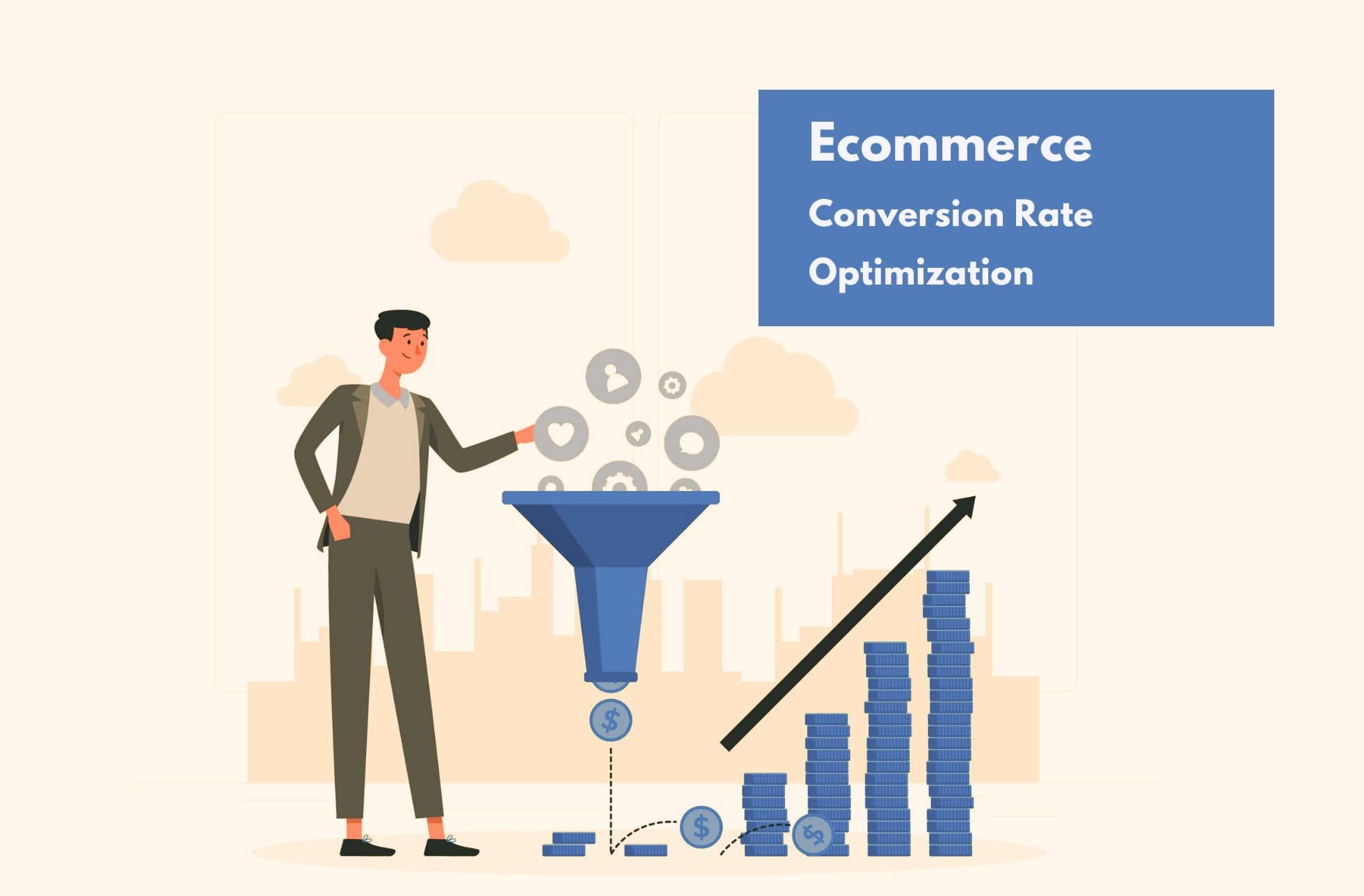Sometimes, when you have a business, you are not entirely sure what the KPI (Key Performance Indicator) variables or indicators should be in order to evaluate the outcome of the marketing techniques you are implementing.
This lack of knowledge will have a negative impact on our entire marketing plan because not knowing which factors to improve or put more emphasis on, will not allow us to know if we are taking the right steps or, therefore, scaling our business.
What’s more, nowadays there are many people who, although they have heard it or read it on the Internet, don’t fully understand correctly what KPIs are in marketing and what these units of measurement are really for.
These questions are the basis of the guide I bring you on this occasion. The lack of precise knowledge about what works and what needs to be improved is one of the main shortcomings of many companies on the network.
In this way, I will start by helping you better understand what the different KPI indicators are and what they are for, and then show you how to choose them within an Internet Marketing strategy.
What is a KPI in Marketing?
A KPI (Key Performance Indicator) is a key development indicator, that is to say, a unit of measurement or objective variable that provides us with data by itself on the functioning of a certain aspect of our strategy over a period of time.
Depending on the results of these, we can make strategic decisions that make us pivot and put even more emphasis on everything that is currently giving positive results and, in turn, establish corrective actions on those points that are “failing”.
What if we look at an example of what a KPI is to make it a little clearer?
Imagine that we add one more social network to our Social Media Plan to increase traffic to your website and you want to know if your work on this new platform is giving the expected results.
In this case, use as indicators the number of new users within that channel, the percentage of visitors who come to your website from this social network and the issue of publications that are getting more traffic are reliable units of measurement.
These metrics will provide you with relevant and objective information about the performance of this new channel.
From this example of a simple Key Performance Indicator we can draw several conclusions about the main characteristics that they should have, regardless of the area they measure:
What characteristics should KPIs have?
Although these units of measurement or indicators are normally related to the same characteristics that the objectives of our marketing strategy should have, those that correspond to the acronym SMART:
- Specific.
- Measurable.
- Achievable.
- Realistic.
- Time.
These acronyms are the qualities that best define the specific function that should be fulfilled by those we choose in our strategy and, in general, in that of any business that prides itself.
1. Measure only objective factors
Whatever indicators we use, remember that they must measure objective aspects, that is, supported by demonstrable evidence.
The main idea when setting a representative and objective KPI is to get data and numbers that we can use to quantify the performance of some specific and important point for us.
We can measure the number of “Likes” or interactions that we have achieved with a publication in some social network, because it is an objective data, but we cannot measure the degree of user satisfaction with that same publication, if we have not associated or assigned a more reliable indicator.
2. They must be realistic units of measurement
There is no point in choosing KPI indicators that do not match the real capabilities and characteristics of our project and its digital marketing strategies.
A lack of veracity and objectivity in the choice of these variables, because they are not really attainable and measurable, will make those indicators irrelevant.
3. Provides only relevant information
Although the more representative elements of our work we measure, the more data we will have to make better-informed decisions, each of these units of measurement must be able to provide us with separate information.
Imagine you take the bounce rate on a blog as a representative KPI indicator.
Although you can probably relate the information obtained with other variables that give you a more complete view, the rebound percentage is an independent data and has great value for itself.
4. Must have continuity in time
It is important that the indicators we take to measure that objective element can be compared with the data obtained in subsequent measurements.
Even if a KPI produces information on its own, we need to compare the results with those obtained in other moments of our marketing strategy, in order to know if we are fulfilling the objectives we have set ourselves.
What are the best KPI indicators in Digital Marketing?
Have you ever noticed that you don’t get to know if your projects are working well or the changes you’ve made to them?
In any digital marketing strategy, a good measurement is the key to face the most appropriate decisions in each case or not to fall into the typical situation of having to make those decisions blindly.
IMPORTANT: in order to quantify future objectives, as well as to know the strengths and weaknesses of our projects, we have to measure very well all our actions and their results.
This is where we get to the point where we would have to choose the most important ones to measure, although to do so we should first understand the basic fundamentals of these parameters or indicators.
“Mega Guide” to know the main KPIs that we should use in Digital Marketing
One of the great advantages of online marketing over traditional channels is the ability to measure our actions in a much simpler and more reliable.
When measuring the impact of a traditional marketing campaign, we find it difficult to locate objective, measurable data that has value for itself (beyond the simple increase in sales), but carrying out these measurements in Digital Marketing is perhaps much easier if we choose the right KPIs.
New technologies have led to the birth of many analytical tools that, better or worse, allow us to know more objective data on the aspect we want to measure.
Normally, these tools are focused on working in a specific and specific field (Web page traffic, social networks, email marketing…) and, therefore, we are going to talk about the most appropriate KPIs in each of these 3 main fields.
1. KPI indicators in the Social Media area
Without ever forgetting that in social networks we relate to people and that, therefore, our actions should focus on users (not machines), there are many aspects that we must measure, to check whether we are achieving the objectives we have set or if on the contrary our strategy should change.
Taking these development indicators very much into account is one of the most important tasks of the Community Manager, because a good analysis of the data thrown by the chosen Key Performance Indicator is fundamental when proposing a change of strategy in social networks.
We could divide the social media KPI indicators in each of the active platforms but, although it is essential to take into account the particularities of each of them, I think it is more useful to establish the division of performance indicators, taking into account the purpose of our presence in these platforms.
“KPI’s of interaction in social media
Those referred to the measurement of the interaction with other users and closely linked to the engagement that we are able to generate.
What data can we measure to analyse the evolution of interaction on Twitter? The number of retweets, Likes… obtained in a period of time or divided between the tweets published.
In Facebook it is similar, always bearing in mind that each social network is different and the way they are used, too. Some good indicators are the number of comments in the publications, “Likes”, times the publication has been shared, etc.
We can count the comments, the “repines” gotten, the amount of “Likes”, etc.
KPIs related to the growth of the social community
We will use them to quantify the increase in followers in each of the social networks in which we have an active presence with our project.
As in the previous case, we can take as a reference a certain period of time, to see how our work has attracted new followers and, therefore, has made the Online community grow around our brand or our profile in social networks.
KPIs related to visibility in social channels
It is very likely that one of the main objectives that you pursue with your constant work in social networks is to increase your visibility in these channels.
To measure and analyze how your presence evolves, it is more useful to take as indicators the KPIs that mark the extent to which your message (and therefore your Personal Brand) gets amplified.
The number of social markers in our content, the number of times it has been shared, the number of mentions received or the number of retweets can be some good indicators or units of measure of this parameter.
Do you want more information about the Community Manager course?
2. The KPI indicators of a Web page or blog
These are the indicators that show us how traffic on our website is evolving and how users navigate our site.
Keeping a strict control of these is essential to optimize the design and operation of the web at all times and be alert to possible problems that may arise.
As a practical example, imagine that you periodically monitor the visitors who come to your website from Twitter, to see if your strategy in this social network is giving the expected results.
If at any given time, you detect that the visits have suffered a sudden fall very hard, you can review your work and see where the error has been, to be able to resume the proper strategy, if you do not set this KPI as an important indicator and do not monitor constantly, this will be impossible.
We are now going to see 5 of the KPI indicators that you should always check, to be aware of the current status of your website and the strategies you apply in it.
Users, sessions and page views
Once we start working with Google Analytics, we find ourselves in the control panel with three main metrics that, in principle, attract a lot of attention.
It is important to be clear that each one of these units of measurement does not refer to the same thing and that the information of each one is valuable by itself. So how do they differ?
- Sessions: refers to the number of visits received by adding new and recurring visitors, that is, if the same user visits us twice, the tool will count a single user but two sessions.
- Users: refers to the number of people (or rather devices) that visit our website in a period of time. It is difficult to talk only about different people, because our analytical tool will detect two new users if, for example, we visit the same website from the computer and then from the mobile.
- Page views: tells us how many pages of our website or blog have been visited between all sessions, in a given period of time.
Rebound rate
Do you know how many of the visitors who come to your website leave you without interacting with any element?
This variable represents the bounce rate, the percentage of visitors that consume the information and “bounce”, that is, they leave your site without interacting with your content.
This KPI indicator informs us to a large extent about the level of satisfaction of the user who visits us, with respect to what he finds on our page (a unit of measurement that Google uses to give greater or lesser SEO relevance to our content).
Channels that bring us more traffic
It is not an independent KPI, since in order to have more complete information, among other things, we should differentiate each of the social networks as a different entry channel for visitors.
Knowing and controlling this parameter is vital to have the certainty that we are getting the visibility of our content and expected web traffic, through the different sources that work on our strategies to get that traffic.
One of the best ways to quantify this KPI is through the tool “Traffic Analytics”, belonging to SEMrush, which gives you a fairly approximate metric to the reality of the weight that each source has within our total traffic.
In this way, you can vary your strategy, so that you can increase the type of traffic you are interested in getting.
CTR (Click Through Ratio)
These acronyms “CTR” refer to the ratio of clicks that our publications get between all the impressions received in Google searches.
It is a KPI indicator that is not talked about as often as others that show us more often the tools of web analytics (visits, users, sessions …).
But in addition to its growing importance in terms of SEO positioning, it is a good indicator that we are managing to present our work in an attractive way for users.
Time spent on the web
The permanence time is a very important KPI, because a good analysis of this metric gives us a lot of information about visitors who come to the website of our business or project Online.
By studying this indicator we can get an idea of whether the user who comes to the website finds the information they were looking for or, on the contrary, leaves us because we have not been able to meet their expectations.
Relevant keywords that bring more traffic
Knowing which keywords are giving us the best performance and the average traffic that those keywords could get, are two of the important indicators to evaluate the development of our SEO positioning strategy.
The objective is to detect if our website, blog or Landing Page attracts the necessary visits to make our digital marketing strategy more successful.

These metrics are not the only ones we can measure on our website (far from it).
The most appropriate KPIs will depend on our objective and the information we need at a given moment to know a specific aspect of our site.
3. Most relevant KPI indicators in Email Marketing
One of the best ways to contact our potential customers is automated email marketing, since it is a direct way because of its great segmentation capacity, and because we can surprise our subscribers with added value as a thank you for registering.
But, unlike this technique, we also have at our disposal the “mailing”, another technique for sending emails that, unlike this first one, is much more massive and less segmented.
Measuring and analysing the results of our mailing campaigns is also particularly important, especially when we talk about measuring and taking out KPI indicators that give us a state of health of our actions in this digital area.
If we manage to mark appropriate “Key Performance Indicator”, we can see how small variations in the title, content, layout of the elements, tone of the message, etc., get better capture the attention of the user and improve the rate of opening and conversion.
In order to analyse email marketing in an integral way (see it as a “whole”), it is important to distinguish between the different phases of a campaign and measure the most important aspects in each case.
What are the 3 best metrics related to subscriber lists?
Why are we going to jointly measure two such different actions as subscriber acquisition and the operation of the campaign itself? It doesn’t make much sense. Therefore, to analyze the subscriber acquisition we can measure:
- Subscribers obtained in a certain time: we start with the simplest. How many people have we been able to add to each of the lists in the last month (or week, or day)?
This indicator, in addition to being fundamental because we need to expand our database to get our message to the maximum number of interested recipients, we can interpret it in conjunction with other actions (types of content, offers, form layout) to try to discover what moves users to become subscribers.
- Lost subscribers: this is the same way as in the previous case, where we can investigate what actions have motivated subscribers to unsubscribe from our mailing lists.
For example, you may have sent too many emails in a short time and collapsed the inbox of your subscribers’ Gmail account. Another very common reason for the increase in casualties is the inclusion of uninteresting content, resorting to the false rule of “more is better”.
Then, the analysis of this KPI will help you realize what you don’t need to do anymore or what you need to improve if you want to stop losing subscribers.
- Geographical location: this metric takes on greater importance, in the event that the objective of our business is to attract subscribers in a certain place and that, due to its limitations, it is of no use to attract new users in other places.
Imagine a business that uses Email Marketing to advertise promotions in its physical store.
Depending on the situation, this may be vital or of moderate importance if we target a wider audience and have no location limitations.
And in the case of sending newsletters, which are the best KPIs to take into account?
We’ve already looked at the previous step. We’ve figured out how to attract subscribers and the lists are starting to grow.
Now we have to analyze how the submissions have worked.
- Email opening rate: it is the KPI that establishes the relationship between the number of mailings and how many have been opened, that is, what percentage of them have caught the attention of users.
A low opening rate is usually closely related to an unattractive email “subject”, an inappropriate schedule, or a bad thematic segmentation. The A/B tests are an extraordinary way of knowing how to capture the attention of subscribers and increase the opening rate.
- The percentage of clicks on the links: once we have managed to get the user to open the email. The layout of the elements, the format or the way we address the subscriber within the Newsletter will mean that the rate of clicks on the links that interest us most varies.
Therefore it is a KPI that will tell us to a large extent if our Email-Marketing strategy is achieving the expected results.
- Users who have been removed from the list: since 30 March 2012, a royal decree establishes that companies are obliged to set up procedures for users to revoke their consent to receive email notifications.
In addition, since May 2017, when the new RGDP came into force, you must take special care of this type of issues and attend to each of the precepts that the update dictated.
As against this law we can do nothing but care and pamper our subscribers. That is why we must try to make a strategy so that the rate of users who unsubscribe is as low as possible.
This will tell you to what extent subscribers do not agree with the theme, frequency or content of your email marketing campaigns.
To combat this, good segmentation and personalization could be the best solution.
What are the best KPIs for product placement
Product placement is a marketing technique where products or services are intentionally positioned in non-promotional media, such as movies or music videos. Sometimes finding the correct indicators that truly can evaluate the performance of a product placement campaign, can be challenging. You need to read the “Know everything about Product Placement: Definition and Best Practices” article to understand this amazing method of advertising. Here are some ideas that can be helpful for measuring product placement performance.
ROI
We can determine the return on investment for the product placement by dividing the total amount paid for the product placement by the increase in sales since the start of the campaign. This metric can give an idea of how effective the product placement was, and it can be used to make decisions on whether to continue or discontinue the campaign.
Website Traffic Increase
Comparing the website traffic before and after launching the campaign can show how successful the campaign was. If there is no increase in sales, it’s not always the campaign’s fault. However, if there is an increase in website traffic, but no increase in income, we should look for the reason somewhere else.
Social Media Chatter
Brand managers can use social media monitoring to track the conversations around their brand and the brand exposure on screen. They can also bait the social conversation to encourage comments and sharing. Brands can use social media software to monitor and measure these conversations, or self-track using hashtags and call-outs for more limited results.
Conclusion
Returning to the question with which we opened the post, if you ever notice that you do not know very well if your project is working properly or is stagnant, or if you are not sure that the changes you have in mind are going to work, measurement and analysis are your best allies.
If we do not measure well our actions, our online presence or the functioning of our campaigns we will not be able to optimize our work, because it will be difficult to find objective data that serve as a guide.
I hope that this post has helped you to familiarize yourself with the subject of KPI’s (or units of measure). Because knowing a little better how to deal with the measurement of your actions on the Internet and especially that you find useful to start taking into account the metrics and analysis for the future.
What are your most commonly used units of measure? Why and for what purpose do you use each of these KPIs?





